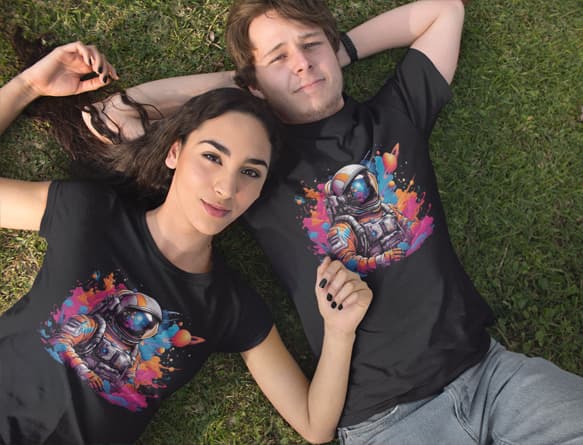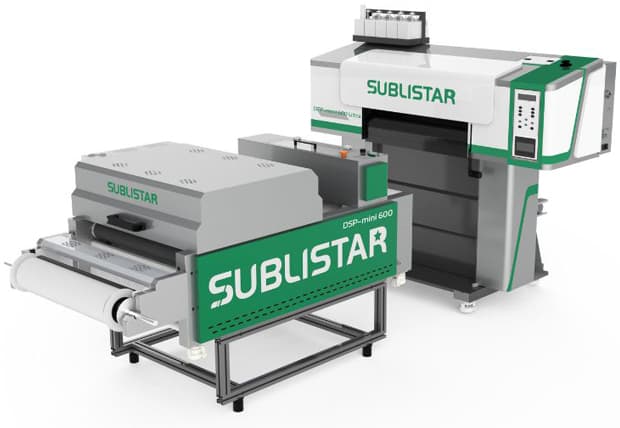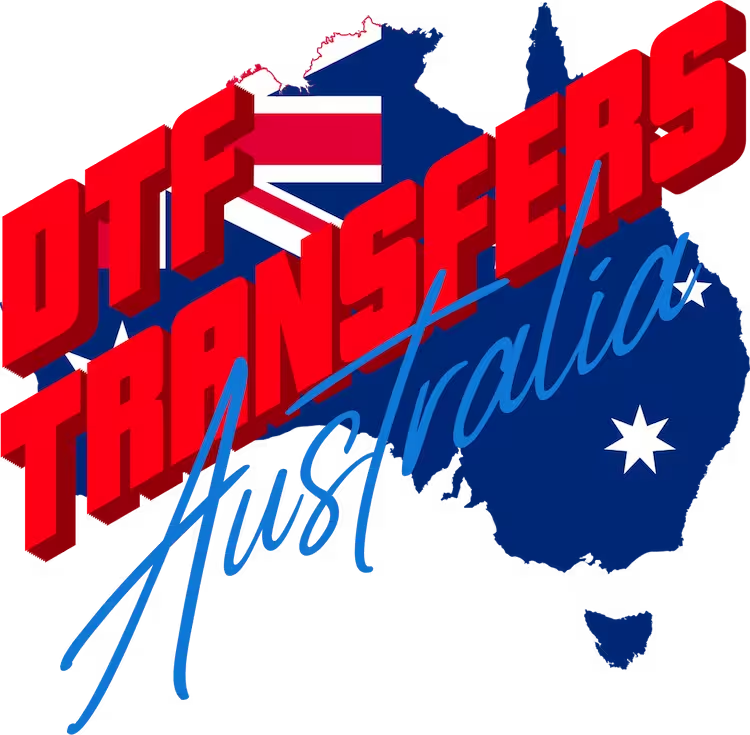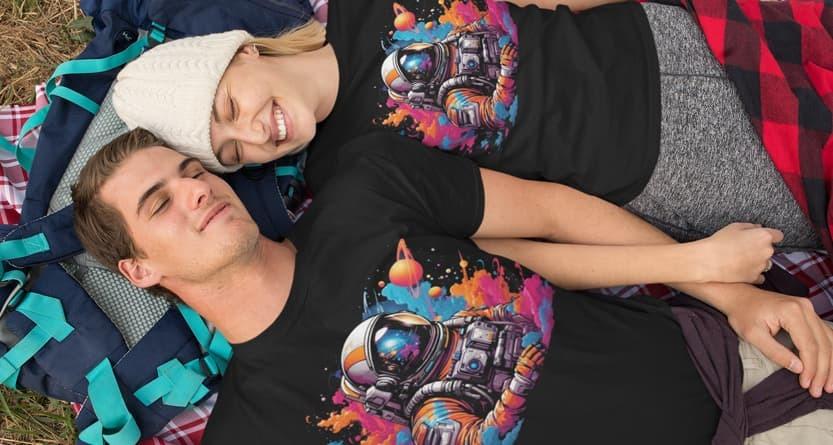All Posts, Direct To Film, Helpful Info
Exploring DTF Transfer Technology in Apparel Decorating
Ever found yourself admiring the intricate designs on a T-shirt and wondered, ‘how do they get these vibrant colours and sharp lines?’.
The answer might surprise you. It’s not magic, but it’s close enough – it’s DTF transfer technology.
This printing revolution has turned the apparel decorating industry on its head. Gone are days of struggling with multiple screens for different colours or fretting over low-quantity orders.
Intrigued? Well, that’s just the tip of this transformative iceberg. By diving into this article, you’ll gain an in-depth understanding of DTF transfers – how they work, their advantages over traditional methods like screen printing, and why they’re a game-changer in versatility with the ability to be fitted to different fabric types.
But if you’re not intrigued just yet… hold tight, because we’ve got more to discuss.
Table Of Contents:
- Understanding DTF Transfer Technology
- The Advantages of DTF Transfers Over Traditional Screen Printing
- Screen Printing Still Has Its Place
- The Versatility of DTF Transfers in Apparel Decorating
- The Impact of DTF Transfers on the Printing Workflow
- FAQs in Relation to Dtf Transfer Technology
- Conclusion
Understanding DTF Transfer Technology
The apparel decorating business is buzzing with a new technology, DTF (direct-to-film) transfer. This printing process has revolutionised the industry, and here’s why.

What is DTF Transfer Technology?
In essence, DTF transfer, or Direct-To-Film transfers use special clear film using a digital printed water-based inks to create stunning print designs. It’s like screen printing but on steroids.
A key player in this game-changing technique are the dtf printers which have seen rapid advancements recently. These printers creat transfers that are applied with a heat press – making it one of the most effective ways to get high-quality prints on fabrics.
The big selling point? You can print full-colour images without any art separation. Remember when we used to break our heads over different screens for each colour layer? Not anymore.
The DTF Process: Step-by-Step
If you’re thinking about dabbling into DTF Transfers yourself, here’s a quick run-through of how things work:
- Create your Design: As always, it starts with an idea. Utilise software such as Photoshop or Illustrator to craft your design digitally.
- Print onto the Film: The design gets printed onto the DTF film by a specialised printer.
- Powder Coating: The freshly printed image then receives a generous coating of adhesive powder, that sticks only where there’s ink.
- Curing Phase: We need that powder to melt into a nice smooth layer. A Spped Oven, Heat Plate or a heat press or tunnel dryer does the trick.
- Heat Transfer: The final step is transferring your design onto fabric with the help of, you guessed it right – a heat press.
The DTF process, from start to finish, lets us print vibrant designs on all sorts of fabrics – light or dark coloured shirts, polyester or cotton blends – it’s no sweat.
DTF (direct-to-film) transfer is a game-changer in the apparel decorating world. This technology uses digital water-based inks and special clear polyester films to create stunning designs, all without needing art separation. With DTF Transfers leading the charge, we can now print vibrant full-colour images onto any fabric with ease.
The Advantages of DTF Transfers Over Traditional Screen Printing
When it comes to printing, the traditional method has always been screen printing. But with the emergence of DTF (Direct-To-Film) transfers, a new printing method is quickly gaining traction.
Cost-Effectiveness of DTF Transfers
One significant advantage of using DTF transfers over screen printing lies in it’s cost-effectiveness. For designs requiring multiple colours and low quantities, your budget will thank you for choosing DTF Transfers.
In contrast to screen printing, where every colour requires a separate stencil and ink, DTF allows for unlimited colour combinations without extra costs.
Affordability isn’t only about upfront expenses but also relates to maintenance costs. Quality equipment like a reliable DTF Printer, though might seem pricey initially, can save you money in the long run by reducing reprint instances due to faulty prints or machine maintenance.

Quality and Precision in DTF Transfers
If high-quality precision is what you’re after then let me introduce Our latest Direct To Film transfers made using the latest technology. With your own heat press transfer application processes achieving crisp edges becomes as easy as pie.
I’ve personally worked with both methods: I started out with traditional screen prints and DTG Printing before switching over to DTF transfers. Let me tell you; nothing beats seeing those fine lines coming out just perfect every single time thanks largely because of the DTF process.
It’s like comparing an old tube TV to a 4K LED screen – both show you the picture, but one does it with so much more clarity and vibrancy. With DTF transfers, your designs are printed onto a special film before being transferred to fabric using heat press transfer method.
The end result? A print that is not only highly detailed but also durable enough to withstand wash after wash without fading or cracking – something screen printing can often struggle with.
Screen Printing Still Has Its Place
In the evolving world of print technology, it’s easy to get swept up in the latest trends and advancements. However, traditional screen printing still holds a significant place in the industry. This is especially true for designs with low colour counts that require volume orders.
Screen printing offers numerous benefits such as durability, vibrancy of colours and cost-effectiveness on large scale orders. The technique is also known for its versatility as it can be used on various materials including fabric, wood, glass and ceramics.
The Perfect Partnership: Screen Printing & DTF Transfers
While screen printing continues to thrive in certain areas, Direct-to-Film (DTF) transfers have emerged as an innovative solution for detailed multi-colour designs. But what makes this partnership so effective?
- Versatility: While screen printing excels at simple designs with few colours printed en masse; DTF transfers are perfect for intricate multi-coloured or photographic images which would be time-consuming and costly to replicate using traditional methods.
- Economy: For small businesses or hobbyists looking into custom t-shirt transfers, combining these two techniques allows you to offer a wider range of products without investing heavily in new equipment or supplies.
- Sustainability: Unlike other digital transfer methods like dye sublimation which often use cheaper but less durable ink; high-quality DTF ink ensures long-lasting prints with vibrant colours – reducing waste from reprints due to fading or wear-and-tear over time.
In essence, integrating both these processes within your business model will enable you to cater effectively across different customer needs while maintaining quality output irrespective of the design complexity or volume.
Remember, not all DTF transfer inks are created equal. Some manufacturers use dye sublimation inks as a cheaper alternative but this can compromise on the longevity and vibrancy of your prints. Therefore, it’s crucial to invest in quality DTF ink.
The beauty of combining screen printing with DTF transfers lies within their complementary nature – each excels where the other falls short. This partnership offers businesses an opportunity to expand their services while maintaining high-quality outputs for their clients.
DTF (Direct-To-Film) transfers are revolutionising the printing world. Offering cost-effectiveness for multicolour designs and low quantities, DTF can save you money in both upfront costs and maintenance expenses. Quality is another winning point with crisp edges, fine lines and vibrant prints that withstand repeated washing without fading or cracking.
The Versatility of DTF Transfers in Apparel Decorating
When it comes to the apparel decorating business, flexibility is key. The more adaptable your technology, the broader your creative scope. Enter DTF transfers – a game-changer in t shirt printing.
Printing on a Wide Variety of Fabrics
Gone are the days when cotton was king and other fabrics bowed before its throne. With DTF (direct-to-film) transfer technology, you can say hello to boundless creativity and goodbye to limitations.
This means that whether you’re working with cotton or denim, silk or leather – even if they’re dark coloured shirts – special DTF films using digital water-based inks have got you covered. Yes. That’s right; those impossible-to-work-with black polyester tees are no longer off-limits.
In fact, you can increase by nearly 50% in production capacity once your businesses includes this new kid on the block (DTF Transfers) as well using the traditional methods as well.
The Appeal Of No Colour Restrictions
You’ve probably been there: someone requests a multi-coloured design on their shirt but then hands over a single navy blue tee. In most scenarios this would be mission impossible — but now you have DTF transfers at hand.
No colour is too bright nor pattern too complex for these high-tech transfers because they use white ink as part of their process. This nifty trick allows for vibrant colours on any fabric shade.
The same goes for intricate patterns and details. Those teeny-tiny elements that were once a printer’s nightmare are now perfectly achievable, thanks to DTF transfers’ superior resolution.

DTF transfers are shaking up the apparel decorating game. They’re adaptable, letting you print on any fabric – even tricky black polyester tees. No colour or pattern is too complex for this high-tech method, and detail precision gets a major boost. So say goodbye to restrictions and hello to boundless creativity.
The Impact of DTF Transfers on the Printing Workflow
DTF transfers, or Direct-to-Film transfers, are changing the game in apparel decorating. This new technology is shaking up traditional printing workflows by doing away with screens and art separation.
Eliminating Art Separation
No more time-consuming process of separating your design into individual colours before you can even start to print. With DTF transfers, you’re free from this tedious task. You simply send your hi-resoloution digital image directly to a DTF printer, and it handles all colour complexities for you.
This direct approach lets us get creative without worrying about how many colours we want to use. So, designs that were once considered too complex or costly due to their high colour count are now easily achievable thanks to DTF transfer technology.
A surprising benefit? Speed. No need for setting up multiple screens means less prep-time and quicker turnaround times. This streamlined workflow allows businesses like ours at DTF Transfers Australia provide quality custom prints faster than ever before.
Ditching Screens Entirely
Maybe not, there is still a need for traditional screen Printing.
But time is a valuable commodity. Traditional screen printing required separate screens for each color used in a design – an expensive investment both in terms of cash and space needed. so when doing jobs that the setting up of multiply screens just does not make sense DTF Transfers are your perfect partner.
In contrast, if you are just starting out DTF transfers makes doing your printing without any screens at all – alowing you to save on equipment as well as storage space.
Simplified Application Instructions
To apply these marvels onto t shirts requires nothing more complicated than a standard heat press. The printed DTF transfer is positioned on the garment, pressed with heat and then peeled away, leaving your design transferred onto the fabric.
A Greener Printing Solution
Switching to water-based inks from plastisol, typically used in screen printing, not only cuts down our carbon footprint but also ensures a softer touch on the end product. Say goodbye to any stiffness or excessive plastic feel.
DTF transfers are transforming the apparel decorating game, ditching traditional printing constraints like screens and art separation. The process is simpler, faster, more cost-effective and environmentally friendly. You can now freely create complex designs with multiple colours and apply them to any fabric type using just a standard heat press.
FAQs in Relation to Dtf Transfer Technology
What is DTF technology?
DTF, or Direct-to-Film, is a game-changing technology in the apparel decorating business. It prints digital designs directly onto special films using water-based inks. Then has an adhesive applied, Cured and then is ready to fit to your T shirts or apparel.
Is DTF better than sublimation?
Absolutely. Unlike sublimation, which works best on white and light-coloured polyester fabrics, DTF shines with its versatility – it can print vibrant designs on any fabric type and colour.
Is DTF better than heat transfer?
In many ways, yes. Heat transfers (HTV) may be labout intensive and needs to be weeded, while DTF ensures crisp edges and fine lines for precise detailing in your design output and the best part no weeding. It also allows you to print full colour instead of just one simple colour or having to layer the design.
What is a DTF transfer?
A DTF transfer refers to the finished product of the Direct-To-Film process: an printed film ready to be pressed onto garments using heat presses.
Conclusion
DTF transfer technology, it’s not just a buzzword. It’s the revolution in apparel decorating you’ve been waiting for.
This method is cost-effective, precise and versatile – printing sharp designs on a variety of fabrics with ease.
No more struggling with screens or worrying about low-quantity orders. The DTF process simplifies your workflow and boosts quality.
The key takeaway? Embrace this transformative technology to step up your game in the print industry. From intricate T-shirt designs to bold fabric prints, DTF transfers are set to redefine what’s possible.
Innovation doesn’t wait – so why should you? Make sure you’re at the forefront of this exciting shift!


